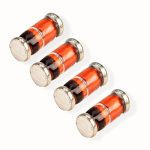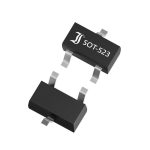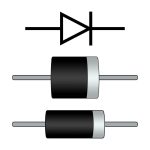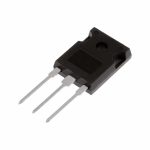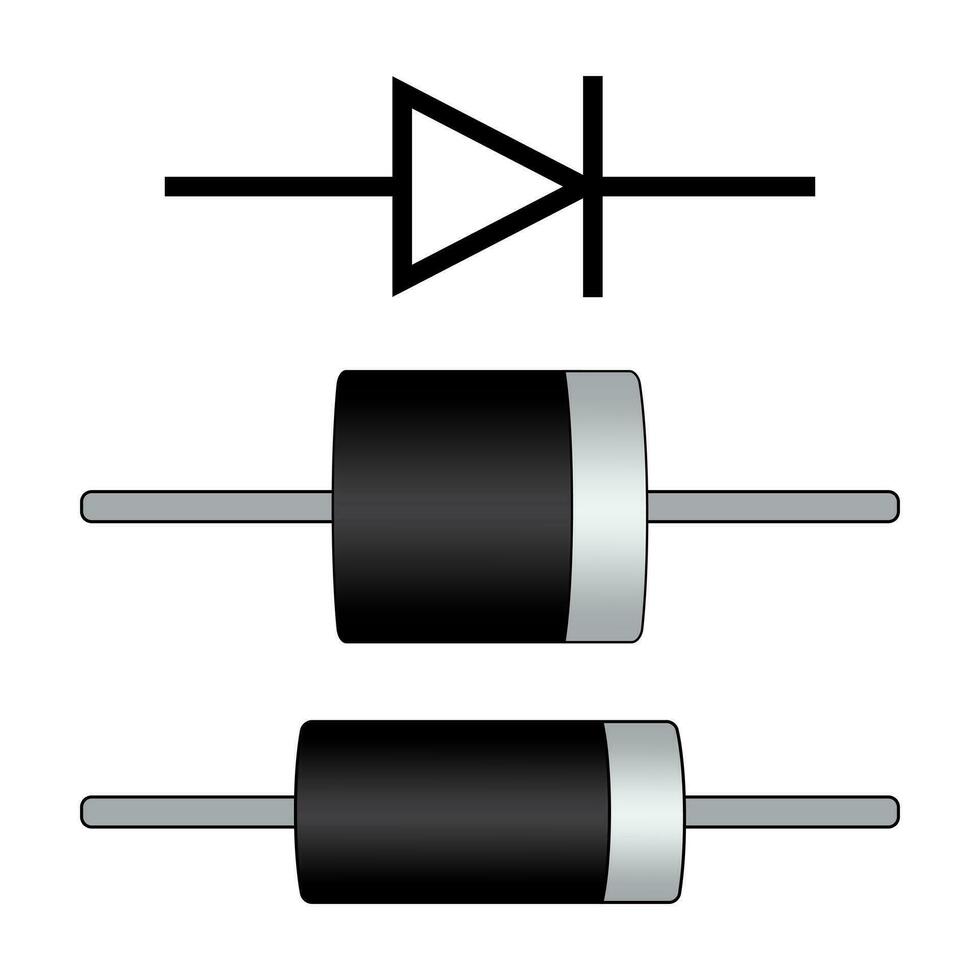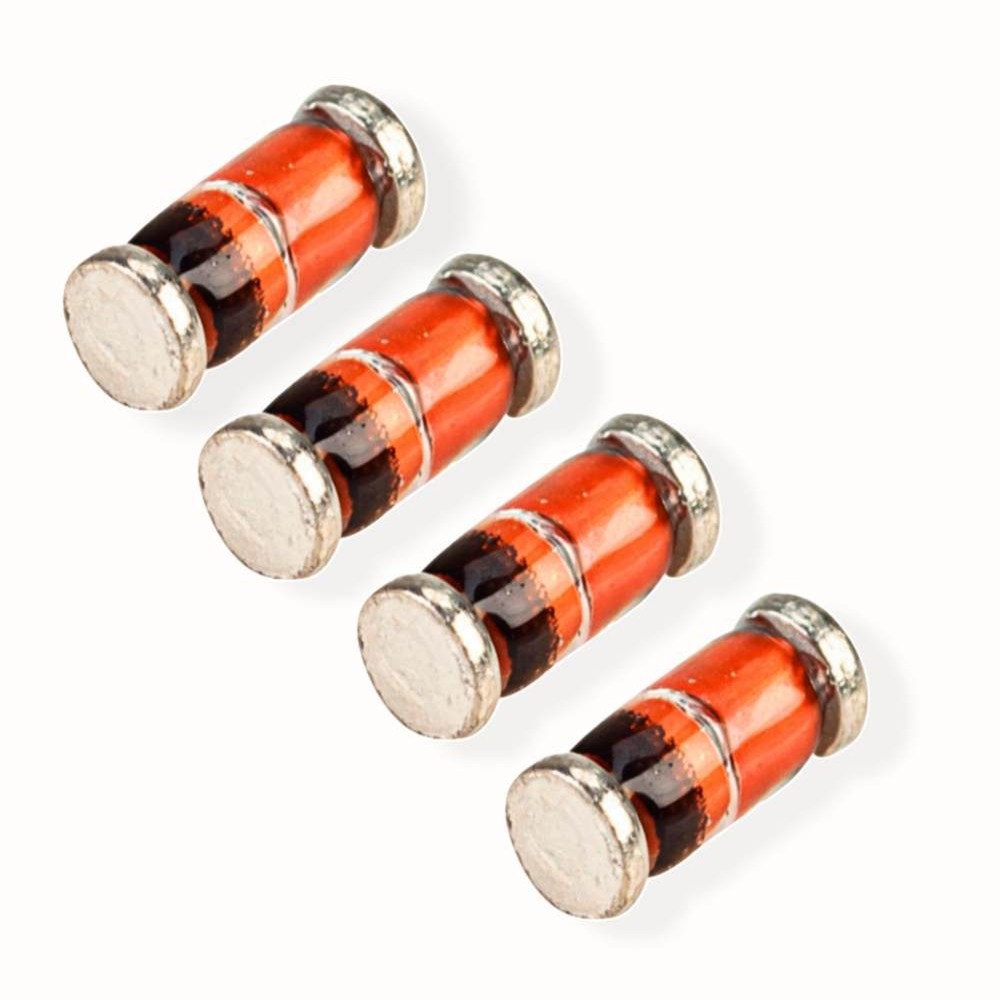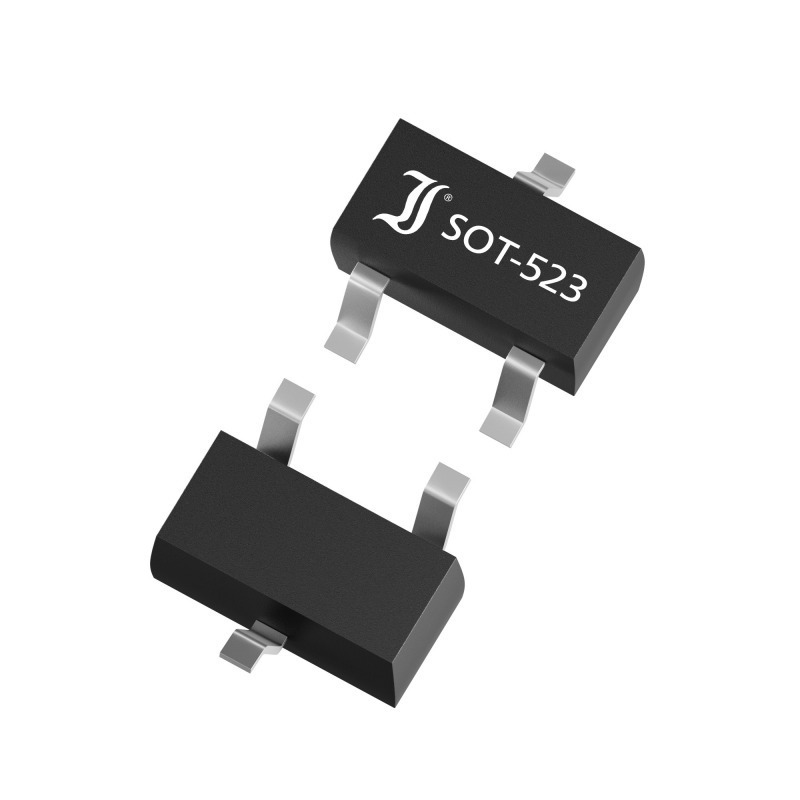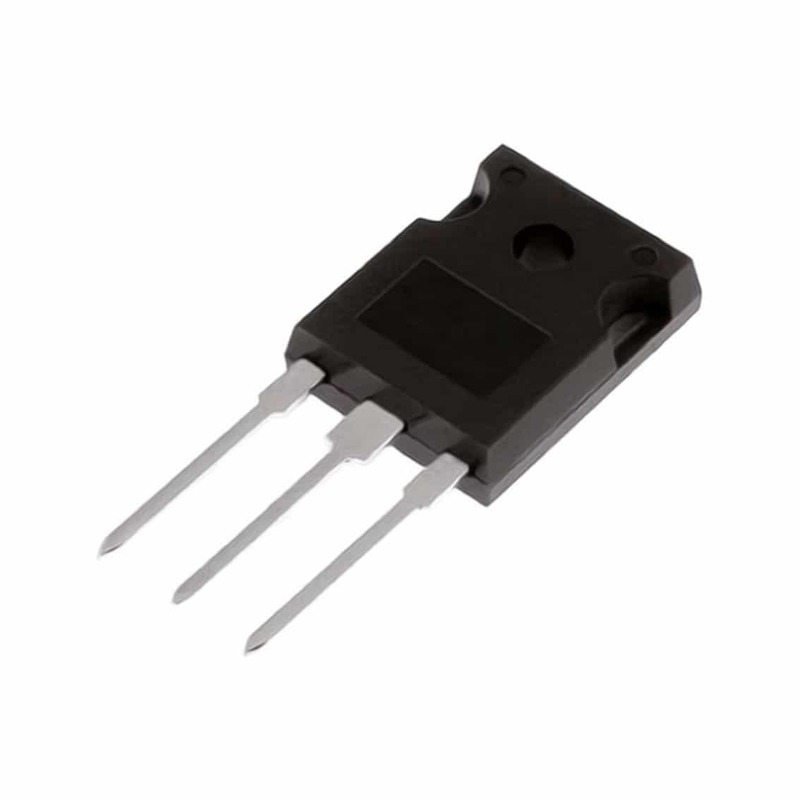Introduction to Diode Voltage Ratings
Understanding diode voltage ratings is crucial for any electrical system. Voltage ratings tell us how much electrical pressure a diode can handle. Going beyond this limit can damage the diode and the circuit it is part of. Here’s a simple breakdown:
- Maximum Repetitive Reverse Voltage (Vrrm): The highest voltage a diode can endure in the reverse direction, during regular operation.
- Maximum DC Reverse Voltage (Vr): The maximum constant reverse voltage that a diode can withstand.
- Peak Inverse Voltage (PIV): The absolute maximum voltage a diode can handle in reverse-bias without breaking down.
When choosing a diode for a particular application, always consider the voltage rating. The diode must be able to support the maximum voltage that will be present in the circuit.
Overlooking these ratings can lead to diode failure. This can result in unwanted current flow or complete circuit breakdown. To avoid this, always match the diode’s voltage ratings with the circuit’s demands.
In the following sections, we will look at how diodes work in electrical systems and how to test their voltage using a multimeter. We’ll also explore different types of diodes and their roles in circuit protection, as well as a case study involving troubleshooting with diodes.
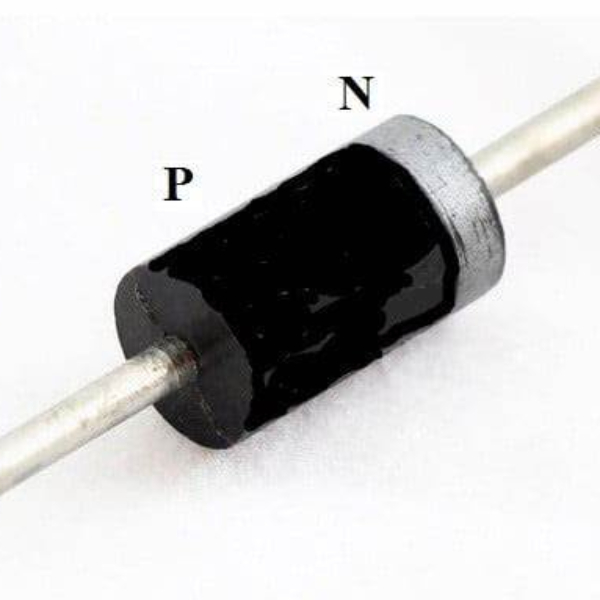
The Role of Diodes in Electrical Systems
Diodes are key components in many electrical systems. Their primary role is to control the direction of current flow, allowing current to pass through in one direction while blocking it in the reverse direction. This characteristic is fundamental in converting alternating current (AC) to direct current (DC), a process vital for many electronic devices.
Controlling Current Flow
In its simplest form, a diode functions as a check valve for electric current. Power supplies use diodes to ensure that electricity flows in the proper direction. Without diodes, there could be potential damage to sensitive components due to the reverse flow of current.
Converting AC to DC
Diodes are crucial in rectifiers, which are circuits designed to convert AC into DC. Household electronics that plug into AC outlets often have rectifiers to operate on DC power. Diodes make this possible by allowing the current to only flow during the positive half-cycles of AC, effectively pulsating the current into a DC-like form.
Signal Processing
Diodes also play an important role in signal processing. Radio receivers, for instance, utilize diodes to demodulate signals so that you can listen to music or news broadcasts. They detect and filter the information carried in electromagnetic waves, turning it into audio or data signals.
Overvoltage Protection
Another role of diodes in electrical systems is to protect against overvoltage. Zener diodes, for example, conduct in the reverse direction to limit voltage spikes within safe levels, safeguarding electronic devices from voltage transients.
By understanding the role of diodes, technicians and engineers can better design, troubleshoot, and maintain electrical systems. The inclusion of diodes in circuits is a fundamental aspect for the correct functioning of most modern electronic devices.
Different Types of Diodes
Diodes come in many shapes and vary in function. Learning about different types can help in selecting the right one for a circuit. Here are some common types:
Rectifier Diodes
These diodes change alternating current (AC) into direct current (DC). They are essential in power supplies.
Zener Diodes
Zener diodes manage overvoltage by conducting in reverse at a set voltage. They protect circuits from high voltage spikes.
Light Emitting Diodes (LEDs)
LEDs glow when electric current passes through them. They are popular in displays and lighting.
Schottky Diodes
Schottky diodes are fast-switching and have a low forward voltage drop. They excel in high-speed circuits.
Photodiodes
Photodiodes generate current when exposed to light. They are used in sensors and solar panels.
Each diode type suits specific applications due to its unique properties. Knowing these helps ensure the right diode is used for the necessary function, preventing circuit issues. Using the correct diode is key to effective circuit design and operation.
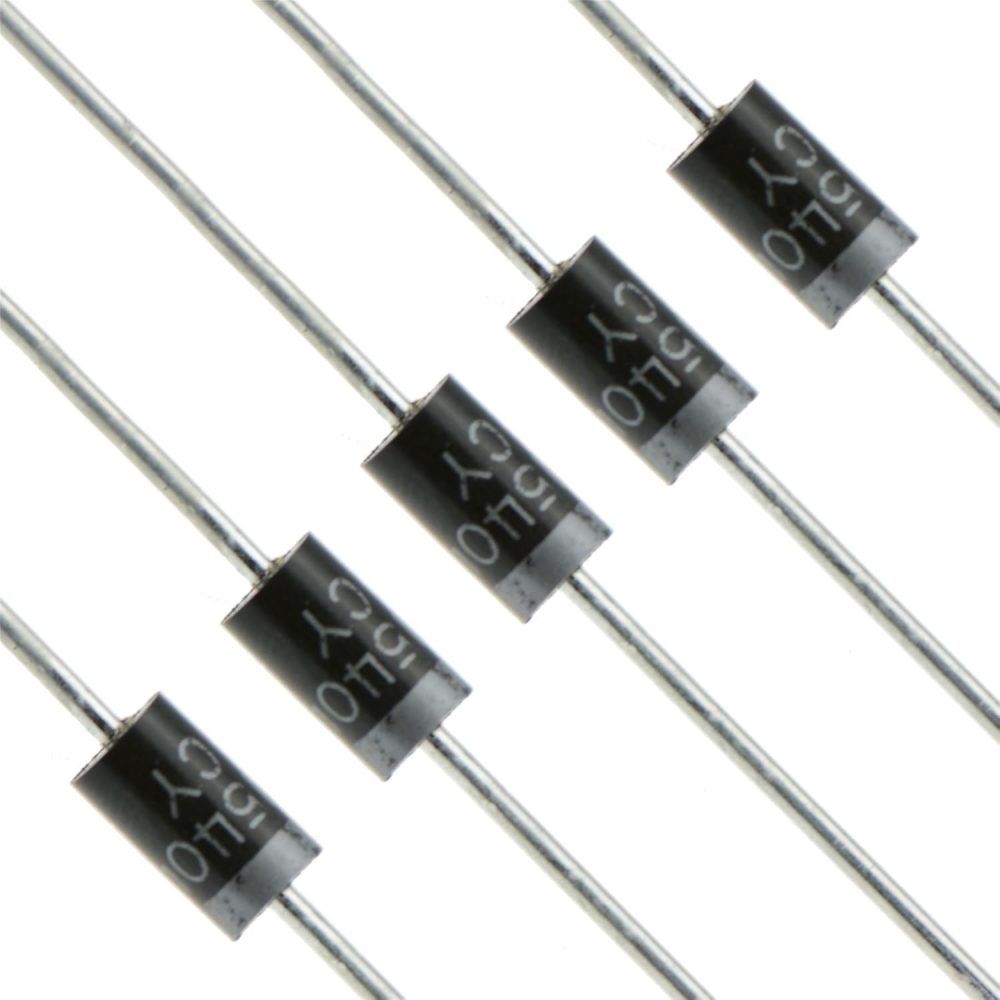
How to Test Diode Voltage Using a Multimeter
Testing the voltage across a diode is a straightforward process with a digital multimeter (DMM). Here’s a step-by-step guide to ensure you accurately assess diode voltage, which is crucial for maintaining circuit integrity.
Step-by-Step Guide for Testing Diode Voltage
- Set your multimeter to diode mode. This setting is usually indicated by a diode symbol.
- Turn off power to the circuit. Ensure all power is off to avoid injury or damage.
- Identify the diode’s anode and cathode. The anode is the positive side, while the cathode is negative.
- Connect the multimeter probes. Place the red probe on the anode and the black probe on the cathode.
- Observe the reading. A functioning diode will show a voltage drop between 0.5 to 0.8 volts.
- Reverse the probes. Switch the probes to opposite ends to check for reverse voltage.
- Check the reverse reading. A good diode will block current and show no voltage or a very high resistance.
Interpretation of Multimeter Readings
- A forward-biased reading between 0.5 to 0.8 volts usually indicates a healthy diode.
- An ‘open’ reading (OL) in reverse bias means the diode is working correctly.
- Similar readings in both forward and reverse bias suggest the diode may be damaged or faulty.
It’s essential to always refer to the diode’s specific voltage ratings when interpreting these readings. These tests can prevent potential failures by identifying damaged diodes that could compromise an electrical system. In the next sections, we will explore common applications of diodes and how voltage ratings are critical for circuit protection.
Common Applications of Diodes
Diodes serve various roles in electronics, and understanding these applications is foundational for effective circuit design. Here’s how diodes are commonly used:
Power Conversion
Their ability to allow current to flow in only one direction makes them perfect for converting AC into DC. This conversion is vital for most electronic devices that operate on DC power.
Signal Demodulation
Diodes are essential in radios for pulling messages out of wave signals. This lets us listen to music or news on our devices.
Overvoltage Protection
Zener diodes conduct in reverse to prevent voltage from spiking too high. They keep our electronics safe from sudden voltage changes.
Lighting and Displays
LEDs, a type of diode, emit light when current passes through. They are widely used in screens and lighting solutions.
Fast-Switching Circuits
Schottky diodes switch quickly and help in processing signals at high speeds without losing much power.
Sensing Light
Photodiodes generate power from light. They are found in solar panels and devices that need to detect light levels.
These varied uses showcase the versatile nature of diodes in electronic circuits. From protection to power management, their ability to control current flow makes them indispensable.
Diode Voltage Ratings and Circuit Protection
Diode voltage ratings are critical for circuit protection. The right voltage rating prevents diode and circuit damage. Diodes with incorrect ratings can fail, causing open circuits or shorts. This can damage connected devices.
Identifying the Correct Diode Voltage Rating
To protect circuits, select diodes based on their maximum voltage ratings. These ratings include maximum repetitive reverse voltage, maximum DC reverse voltage, and peak inverse voltage. Never exceed a diode’s voltage rating in your circuit.
Zener Diodes for Overvoltage Protection
Zener diodes are special. They protect against voltage spikes by conducting in reverse at a set voltage. Use the correct Zener voltage rating to shield electronics from power surges.
By respecting diode voltage ratings, circuits stay safe. This ensures longevity and reliability of electronic devices.
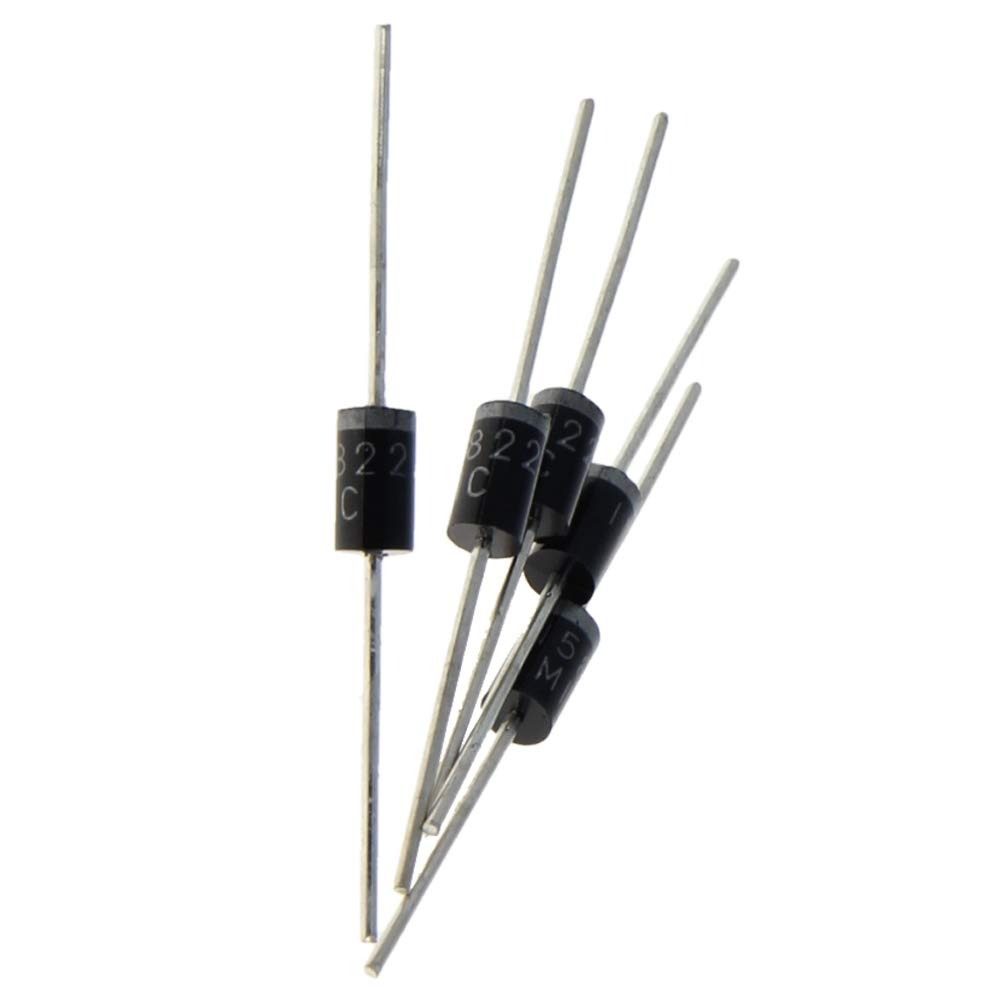
Troubleshooting with Diodes: A Case Study
Troubleshooting is a key skill in managing electrical systems. Diodes can fail and disrupt the entire circuit. Imagine a situation where part of a scoreboard stops lighting up. It’s often due to one or more LEDs failing. Technicians need to find the faulty diode quickly. Using a multimeter is the simplest way to do this.
Identifying and Testing Faulty Diodes
To start, ensure the scoreboard is off and capacitors are discharged. Set the multimeter to diode mode. This gives a clear reading of each diode’s health. Connect the test probes to the diode. A working diode shows a certain voltage drop. If no drop shows up, or it’s the same in both directions, the diode may be bad.
Replacing the Faulty Diodes
Once you find the faulty diodes, replacing them is straightforward. Remove the bad ones and solder in new diodes with the same voltage rating. It’s essential to match the diode voltage to avoid future issues.
The Role of Diode Voltage in Troubleshooting
Remember, diode voltage ratings are vital in this process. They ensure the diode can handle the current without damage. When you replace a diode, check that the voltage rating fits the circuit’s needs. This keeps the scoreboard running without hiccups. By following these steps, technicians can quickly fix issues and keep the electronic devices in top shape.
Importance of Diode Voltage Ratings in Electronic Devices
Diode voltage ratings matter a lot in electronic devices. They make sure diodes can handle the electric pressure they face. Diodes with wrong voltage ratings can break down. This causes trouble in the device and may even spoil it.
Devices that use diodes include phones, TVs, and computers. With the right diode voltage, these gadgets work well. They don’t face issues like power overload or circuit damage. Hence, it’s key to choose diodes with proper voltage ratings.
High voltage can damage diodes and the parts around them. Good ratings act as a shield, keeping devices safe from electric shocks. Remember this when you pick a diode for any electronic tool.
In short, diode voltage ratings guard the devices we use every day. They make sure our gadgets run smoothly and last longer. Checking these ratings is a step we can’t skip in device care.
